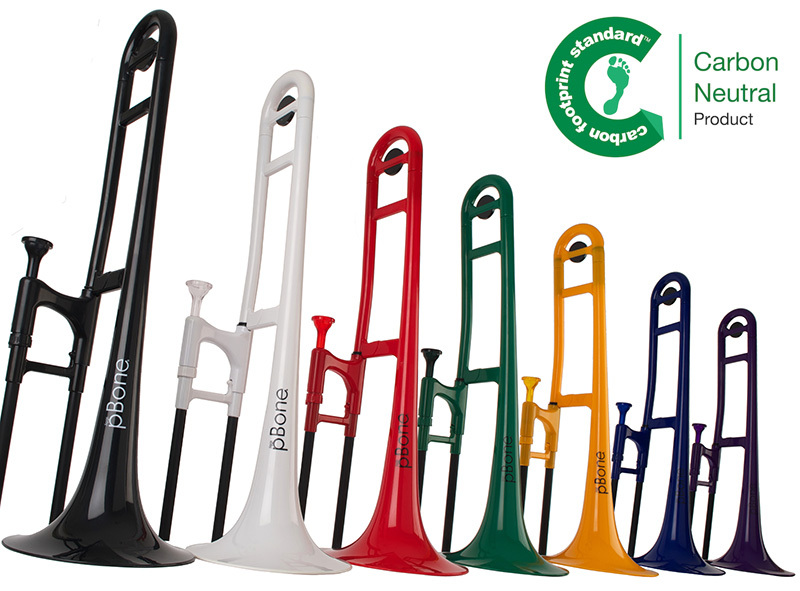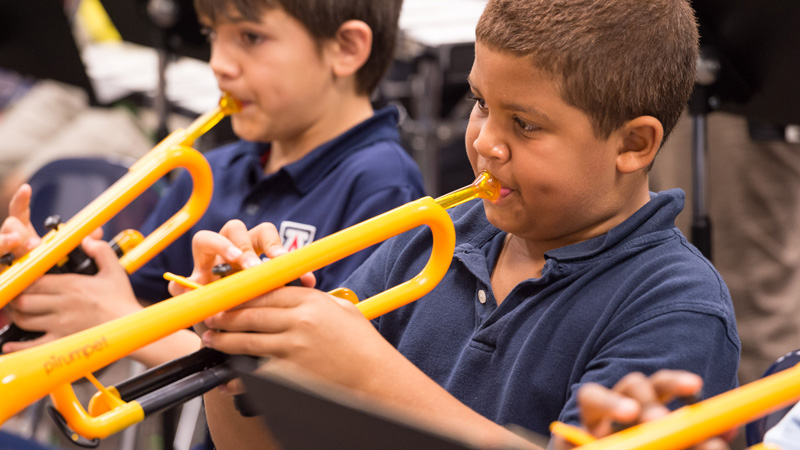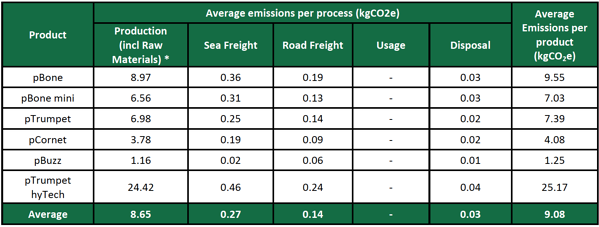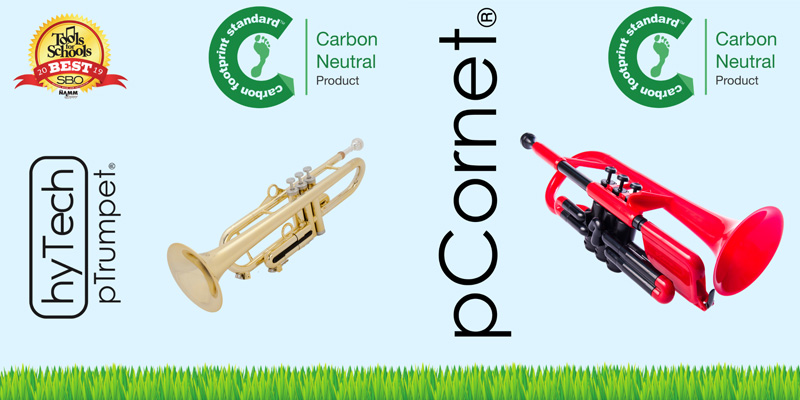Making pInstruments Carbon Neutral
17th December 2020In this latest blog focusing on sustainability within the music industry, we check out the pInstrument range which has recently been awarded official Carbon Neutral Product status…

About the pInstrument Range
The pInstruments burst onto the scene a number of years ago with the pBone being the first into the market. Since then, they have gone on to develop a range of Brass instruments primarily made from ABS plastic. They are designed to be super lightweight and easy to hold/play for young beginners. They are also are ideal for school music projects due to the low cost and durability. Check out the full range here.
Nowadays people are rightly staring to explore the sustainability of products and we’re glad to see certain manufacturers responding to this challenge. It’s important they improve their methods and be transparent about their footprint. In the Summer of 2020 the pInstrument range was official recognised as being Carbon Neutral products.
What Does Carbon Neutral Mean in Musical Instrument Production?
In this case, being ‘Carbon Neutral’ means that the carbon emissions caused by the pInstrument range has been balanced by funding an equivalent amount of carbon savings elsewhere in the world. These savings are generated through helping to fund renewable energy products and energy efficiency projects. Many of which bring additional community benefits in developing countries, as well as helping to reduce greenhouse gases.

What About All That Plastic?
It’s true that disposable plastics are a huge issue for the well-being of the planet. And the first reaction of many is to be anti-plastic all together. However, these plastic instruments are not only made from fully recyclable ABS plastic but they also are produced using a lot less energy and harmful products than ‘traditional’ brass instruments.
These pInstruments can last for many years and as/when they do come to the end of their life they can be widely recycled in the UK. Plastic therefore can be a more sustainable choice, however it’s not just to do with materials, it’s to do with methods…
Production Methods & Further Improvements
So far we’ve focused mainly on the end product and the materials it’s made from. However we all know that a lot of the carbon footprint caused in the creation of a product is in the manufacturing, sourcing and distribution stages.
To understand the impact of all these stages the pInstrument team began a detailed analysis of the whole process involved in creating their range. This included investigations into the materials, the distance every product travels from suppliers to sea ports, and throughout the whole distribution network.
Having gone through this assessment it allowed them to focus on how they can further reduced CO2 emissions in the future. Small changes such as changing their nylon bags for a more sustainable fabric are quick wins. Larger challenges such as using more efficient forms of transportation are being explored. The assessment allowed them to set the average emissions per process/instrument (see below). This paves the way for their offset project funding. You have to know your impact to set the minimum bar for your funding to offset it.

So How Are They Offsetting?
With their carbon impact now independently assessed and verified the pInstrument team know what level of investment in offsetting projects is required to mitigate their impact. In this instance they have chosen to work closely with two main offsetting projects:
Fuel Efficient Stoves for North Darfur Women, Sudan
This project replaces three stone fires with EzyStove®, which facilitate 40% in wood savings. The stove also reduces smoke particles that are harmful to the eyes and lungs by 70% as well as promotes other socio-economic benefits. Since it’s inception the project has:
- Distributed around 5,000 stoves in 10 villages
- Reduced approximately 20,000 tCO2e
- Saved 13,000 tonnes of wood
Providing Wildlife Habitats + Helping Kenyan Reforestation
The Kikuyu escarpment forest with its great mixture of both large and small wildlife animals, birds and butterflies, has been the beautiful gateway to the Great Rift Valley until degradation trend struck. This environment is the source of water and thus livelihood to the neighbouring communities.
In just a few years, wanton and deliberate destruction of the escarpment environment through charcoal burning, logging for timber and fuel wood, ring-debarking of medicinal trees and overgrazing has resulted to virtual depletion of forest vegetation cover. This has in return resulted to drying of springs/rivers/streams, soil erosion, emigration of wildlife/birds, scorching sun, human-wildlife conflict and the scarring of once a beautiful scenic landscape that generated some income through tourism.
Supporting this project has helped in various ways:
- Poverty reduction through employment creation
- Water catchment areas will be conserved providing water/food security
- Birds, butterflies and other wildlife habitats will be conserved and others created
Read More:
- pInstrument/Warwick Music Carbon Neutral Report
- pInstrument Carbon Offset Certificate
- The Carbon Footprint Standard & Credentials
